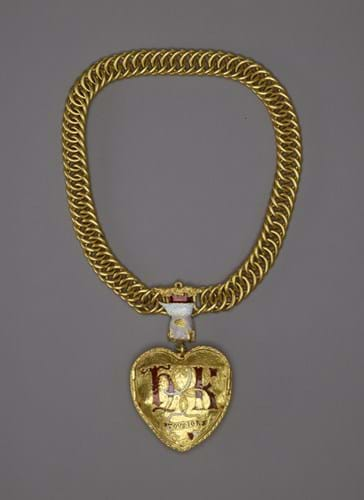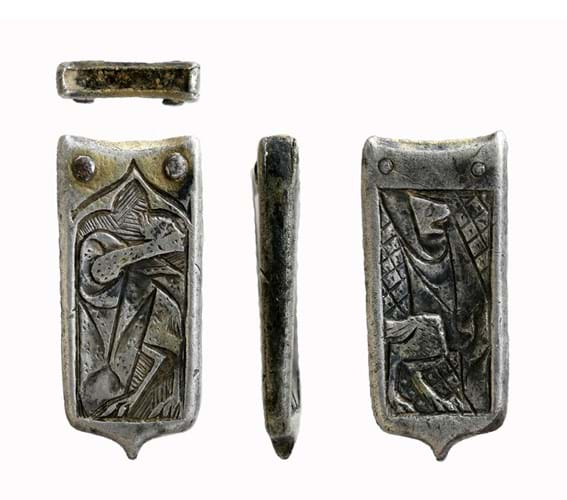
Found in Warwickshire, this Tudor gold pendant on chain linked by its imagery to Henry VIII and his first wife Katherine of Aragon is expected to be purchased by a museum.
More than 45,500 archaeological finds including more than 1000 Treasure cases were recorded in the latest Treasure Annual Report (2020) and the Portable Antiquities Scheme (PAS) Annual Report (2021).
The reports take a length of time for all the items to be reported and recorded and have been announced by The British Museum and Department for Digital, Culture, Media & Sport (DCMS).
Michael Lewis, head of PAS and Treasure at the museum, said: “The finds recorded by the PAS have been found by everyday people (not archaeologists), mostly by those enjoying their hobby of metal-detecting. These finds, if recorded, are making a massive contribution to archaeology and helping to transform our knowledge of Britain’s past.”
Among the highlights is a Tudor gold pendant on a chain with imagery relating to Henry VIII and his first wife Katherine of Aragon (m.1509-33).

A view of both sides of a Tudor gold pendant on chain linked by its imagery to Henry VIII and his first wife Katherine of Aragon.
Formed of a heart-shaped pendant with enamelled motifs, held on to the chain via an enamelled hand and decorated with an entwined Tudor rose and pomegranate bush to the front, with the reverse featuring letters H and K (for Henry and Katherine) in Lombardic script and linked by a ribbon.
The legend + TOVS + IORS is depicted on both sides. The double-headed white and red rose was used by the Tudors from 1486, and the pomegranate was the badge of Katherine of Aragon. + TOVS + IORS is a pun on the French for ‘always’ ie 'toujours' and 'all yours'.
The object was found in Warwickshire by cafe owner Charlie Clarke who had been metal-detecting for just six months when he found it. The pendant is expected to be acquired by a museum.

Among the finds announced in the latest report was this 14th century medieval silver strap-end depicting a birdlike animal and a dog-like animal which would have been part of a belt. It was found by a metal detectorist in Hampshire and will be acquired by Hampshire Cultural Trust.
The PAS scheme, run by the British Museum, has benefited from various donations and funding including from the Headley Trust, the Graham and Joanna Barker Fund. Donations for Treasure finds to be purchased by institutions has come from funds including Art Fund, the Headley Trust, the Heritage Lottery Fund, the National Heritage Memorial Fund and the V&A Purchase Grant Fund.
The government is in the process of amending the official definition of treasure to cover rare and precious archaeological finds, not just those that are more than 300 years old and made of gold or silver or precious metal, as the current law states.
The Treasure Act came into law in 1996 and The British Museum’s PAS was set up in 1997 so that archaeological objects found by the public can be voluntarily recorded.
Unless an object is defined as Treasure (under the Treasure Act), finders have no legal obligation to report them, but have been doing so voluntarily.
Treasure Annual Report 2020 and the PAS Annual Report 2021
In Numbers:
45,581 archaeological finds including
1085 Treasure cases
96% found by people metal detecting
Gloucestershire, Suffolk and Lincolnshire had the most recorded finds
To date:
872 research projects have used PAS data
1.6m items have been recorded in The Portable Antiquities Scheme database





